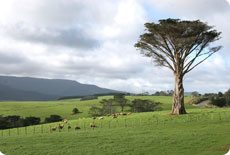Free phone within New Zealand: 0800 123 733
Email: [email protected]
Agriculture and the ETS

Direct agricultural emissions will not be brought into the ETS until 2015. This means that emissions from livestock (methane and nitrous oxide) will not be included in the ETS until this time, but other indirect emissions (such as emissions from fuel and electricity consumption) will be included from July 2010.
The obligation of for direct agriculture emissions will begin in 2015 at a rate of 10 percent of emissions. This obligation will increase at a rate of 1.3 per cent per annum from 2016. The baseline (on which will determine the percentage obligation) will be the industry average emissions per unit of output. The baselines will be linked with the emission factors for determining the obligation and are likely to be kg/meat or kg/milk solids.
To assess the likely impact of the ETS on your farm try using our carbon calculator.
Emission Factors
The emission factors for agriculture emissions have been set in the Climate Change (Agriculture Sector) Regulations 2010. These regulations spell out how the emission factors are to be used. These emission factors are based on per unit of output (kgMS or kg of dead carcass weight). These factors have been calculated for the whole life cycle of the animal but are represented as product output due to the point of obligation (explained below) is at the processor level. These emission factors form the basis of our carbon calculator.
Point of Obligation
It has been decided that the point of obligation for the agriculture sector will initially be at the processor level. This will mean that the processor will account for all emissions and the cost is likely to come directly off the price paid for the product. The intent is then to revert to an on farm point of obligation, once tools and techniques enable this to be a simple process.
The implications of the point of obligation being at the processor level mean the farmer won’t have to bother with extra paper work. However, those farmers who are proactive in investing in emission reduction technologies and techniques may not have this recognised in their carbon balance.